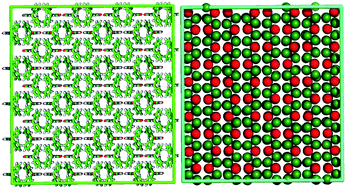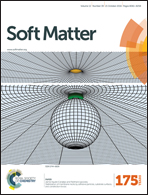Coarse-grained modeling of crystal growth and polymorphism of a model pharmaceutical molecule†
Abstract
We describe a systematic coarse-graining method to study crystallization and predict possible polymorphs of small organic molecules. In this method, a coarse-grained (CG) force field is obtained by inverse-Boltzmann iteration from the radial distribution function of atomistic simulations of the known crystal. With the force field obtained by this method, we show that CG simulations of the drug phenytoin predict growth of a crystalline slab from a melt of phenytoin, allowing determination of the fastest-growing surface, as well as giving the correct lattice parameters and crystal morphology. By applying meta-dynamics to the coarse-grained model, a new crystalline form of phenytoin (monoclinic, space group P21) was predicted which is different from the experimentally known crystal structure (orthorhombic, space group Pna21). Atomistic simulations and quantum calculations then showed the polymorph to be meta-stable at ambient temperature and pressure, and thermodynamically more stable than the conventional orthorhombic crystal at high pressure. The results suggest an efficient route to study crystal growth of small organic molecules that could also be useful for identification of possible polymorphs as well.


 Please wait while we load your content...
Please wait while we load your content...